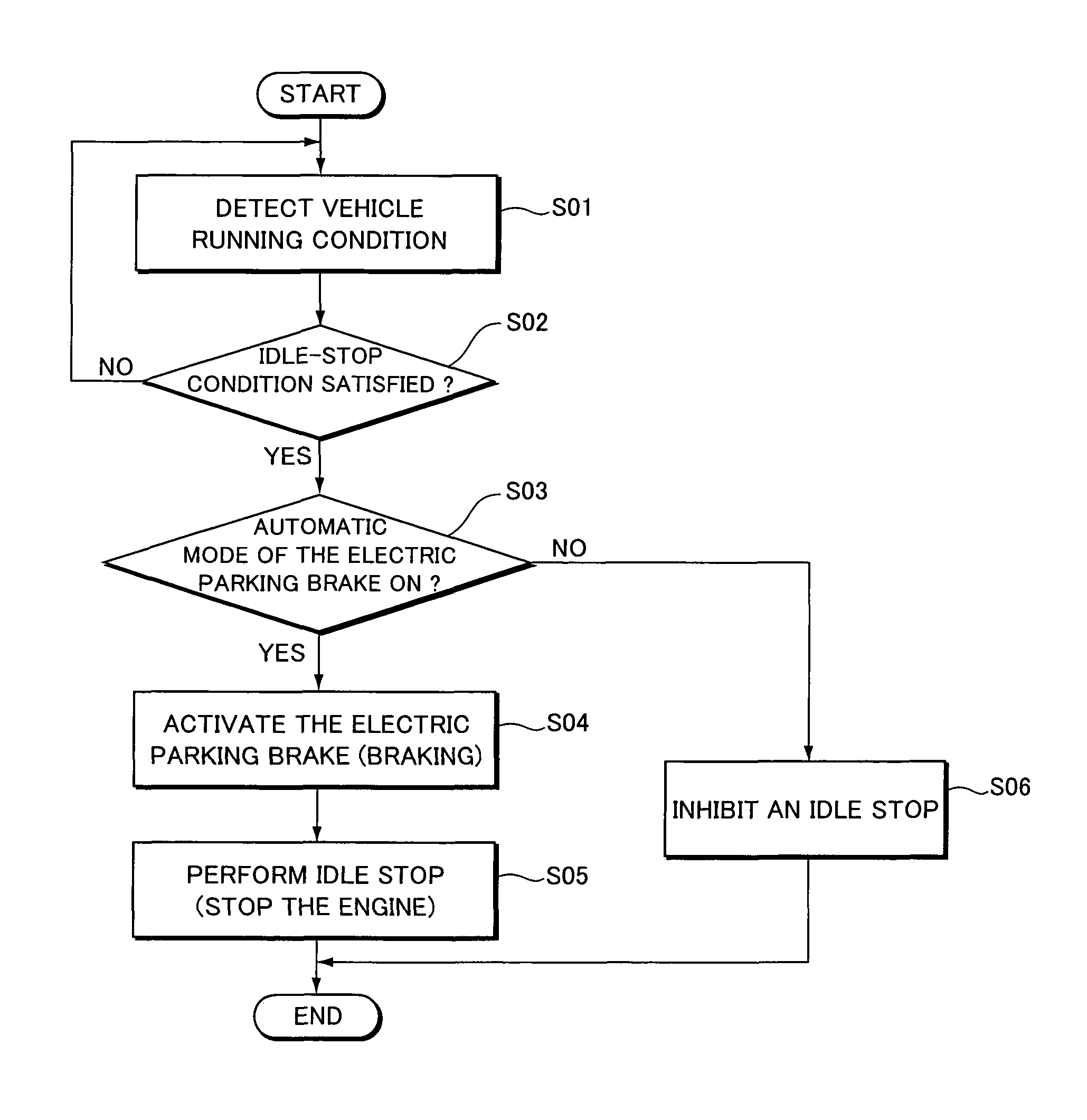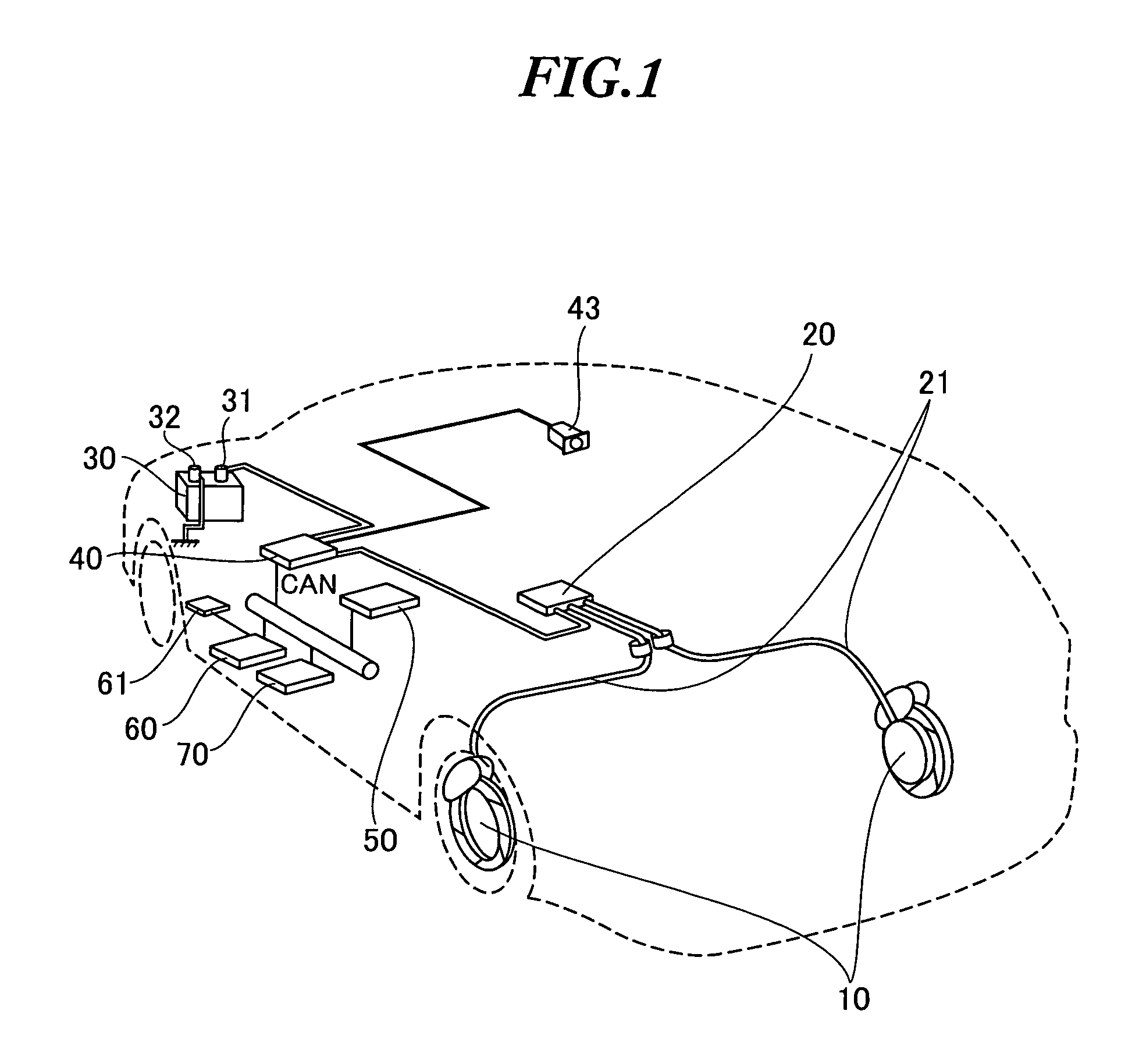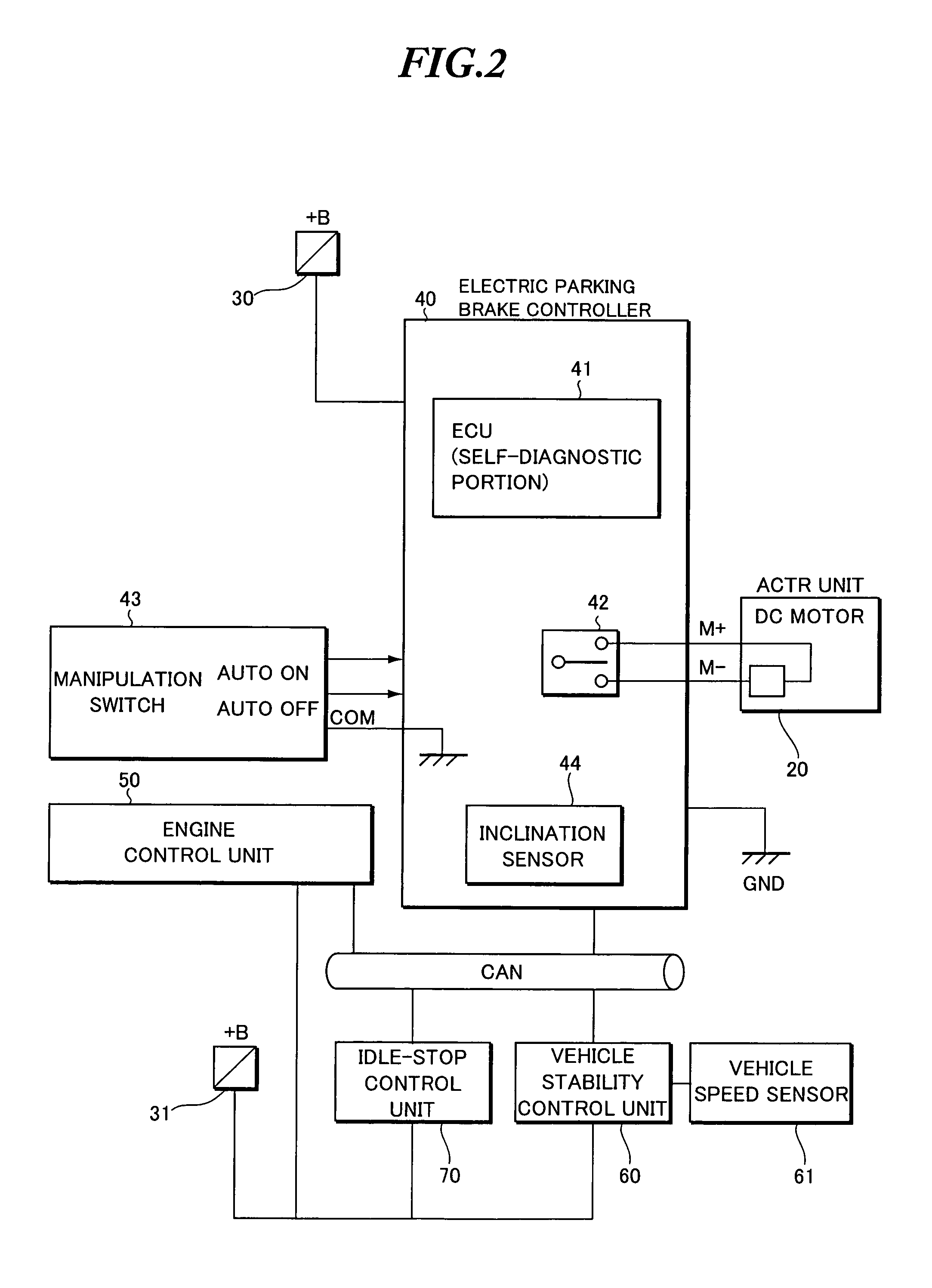Vehicle control system
a technology of vehicle control and control system, which is applied in the direction of braking system, machine/engine, engine starter, etc., can solve the problems of vehicle unintentional movement, creep force, vehicle unintentional movement, etc., to prevent unintentional movement of the vehicle, improve the reliability of the vehicle, and prevent the effect of unintentional movemen
- Summary
- Abstract
- Description
- Claims
- Application Information
AI Technical Summary
Benefits of technology
Problems solved by technology
Method used
Image
Examples
first embodiment
[0027]A description will now be made to a vehicle control system in accordance with a first embodiment of the present invention.
[0028]FIG. 1 is a schematic view illustrating the configuration of the vehicle control system of this embodiment. FIG. 2 is a block diagram illustrating the circuit configuration of the vehicle control system.
[0029]The vehicle control system includes a parking brake 10, an actuator unit 20, a battery 30, an electric parking brake controller 40, an engine control unit 50, a vehicle stability control unit 60, and an idle-stop control unit 70.
[0030]On the other hand, the vehicle employed in this embodiment is a passenger automobile which incorporates a gasoline engine as its drive power source.
[0031]The parking brake 10 is a braking mechanism for applying brakes to the drive wheels of the vehicle in order to prevent unintentional movement of the vehicle, e.g., when the vehicle is parked or at a stop. The brake 10 is installed at each of the right and left rear...
second embodiment
[0067]A second embodiment is adapted such that the idle-stop control unit 70 performs an idle stop only when the vehicle is detected to transition to a standstill state and the ECU 41 of the electric parking brake controller 40 does not output the fail signal (or the fail signal is OFF).
[0068]A description will now be made to the operation of the vehicle control system described above. FIG. 6 is a flowchart showing the operation of the vehicle control system related to the presence or absence of the fail signal of the electric parking brake. The steps of the operation will be described below in the order in which they appear.
101: Detecting the Running Condition>
[0069]The idle-stop control unit 70 detects the running condition of the vehicle. Here, for example, the running conditions of the vehicle include the speed of the vehicle (vehicle speed) calculated based on the vehicle speed pulse signal outputted by the vehicle speed sensor 61 and the presence or absence of the depression o...
modified examples
[0083]The present invention is not limited to the aforementioned embodiments, and various modifications and variations can be made thereto without departing from the scope of the present invention.[0084](1) The first and second embodiments inhibit an automatic stop of the drive power source when the automatic mode of the brake control section is released or when the diagnostic section outputs a fail signal. However, the condition for inhibiting the automatic stop of the drive power source is not limited to this condition but may be changed as appropriate. For example, an inclination sensor for detecting an inclination of the road surface may be used to inhibit the automatic stop of the drive power source only when the automatic mode is released and the inclination of the road surface is equal to or greater than a predetermined inclination. Alternatively, the automatic stop of the drive power source may be inhibited only when the diagnostic section outputs the fail signal and the inc...
PUM
 Login to View More
Login to View More Abstract
Description
Claims
Application Information
 Login to View More
Login to View More - R&D
- Intellectual Property
- Life Sciences
- Materials
- Tech Scout
- Unparalleled Data Quality
- Higher Quality Content
- 60% Fewer Hallucinations
Browse by: Latest US Patents, China's latest patents, Technical Efficacy Thesaurus, Application Domain, Technology Topic, Popular Technical Reports.
© 2025 PatSnap. All rights reserved.Legal|Privacy policy|Modern Slavery Act Transparency Statement|Sitemap|About US| Contact US: help@patsnap.com



